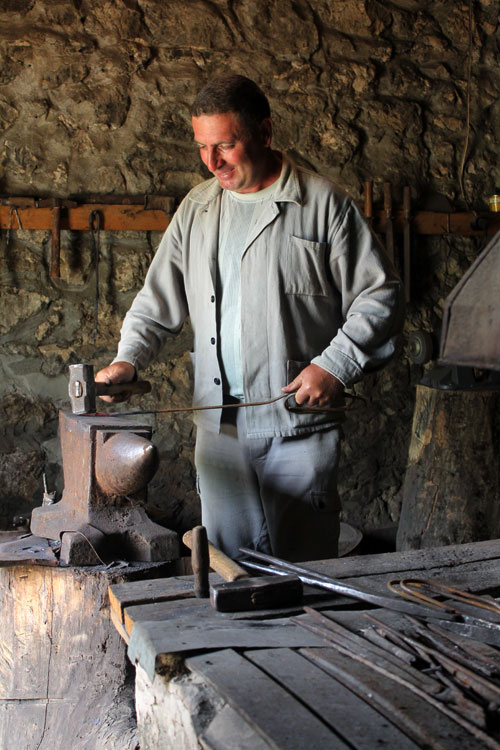
Artour from Artsakh: A Blacksmith Who Also Knows How to Cut Hair
Marine Martirosyan
Artour Abaghyan is a blacksmith in Metz Tagher, a village in the Hadrout region of Karabakh.
When we enter his workshop, Mr. Abaghyan says he can make just about anything, but asks us to refrain from asking questions.
He lights the fire and stokes the billows.
With a heavy rain just ending, we find the warmth of the workshop welcoming. Artour is busy working, but seeing we are taking photos he asks that we stop.
He’s a taciturn man and answers my questions in succinct fashion. “Tight lipped people usually have much to say,” I note, trying to draw him into a conversation. Artour smiles but doesn’t reply.
“I don’t talk much. Say something and I’ll make it, but I won’t talk,” he says.
The blows of his hammer drown out what little Artour in fact does say. He opens up after we exit the workshop for a coffee. I realize it’s because I’m recording his words.
Artour tells us he started to learn the smithy trade when he was twenty. He’s self-taught and never apprenticed next to a master. At one time, Artour worked out of his house with his brother.
Knar, the photographer, asks Artour if his ears don’t hurt from all the ringing blows of his hammer. Artour laughs, “Of course they do.”
I look at his sneakers, sporting the colors of the Armenian flag. “Those are patriotic shoes you’re wearing,” I joke. Artour says he bought them at the village shop for around $5.
As a trade, blacksmithing was much more in demand ten or fifteen years ago. Then, Mets Tagher had a number of smithies, now they are only three or four left.
As we talk, Artour is preparing nails for a horse’s hoof. There used to be some one hundred horses in the village, he says, now just a handful remain. “Today, they all have cars,” says Artour, who charges 3,000 drams ($6.4) to shoe a horse.
He mostly fabricates nails, agricultural tools and cutting knives.
 |
 |
Despite changing times, Artour still sees blacksmithing as a respectable trade. He can’t say if his five-year-old son will follow in his footsteps.
Artour went to the frontline last month. Troubled times along the border have forced people to keep one foot on the border and the other in the village.
Mr. Abaghyan also knows how to cut hair. When I ask if he should have chosen to become a barber instead of the difficult work of a blacksmith, Artour responds, “How many heads must I cut just to make the same money as a cutting knife?” We all laugh. (He gets 5,000 drams per machete.)
Outside Artour’s workshop is a plaque memorializing all the prominent smithies of Metz Tagher.
When I ask Artour if he’d like to see his name enshrined on the plaque, he says, “it’s too early for that.”
Photos: Knar Babayan, Vahe Sarukhanyan
 Videos
Videos Photos
Photos




Write a comment